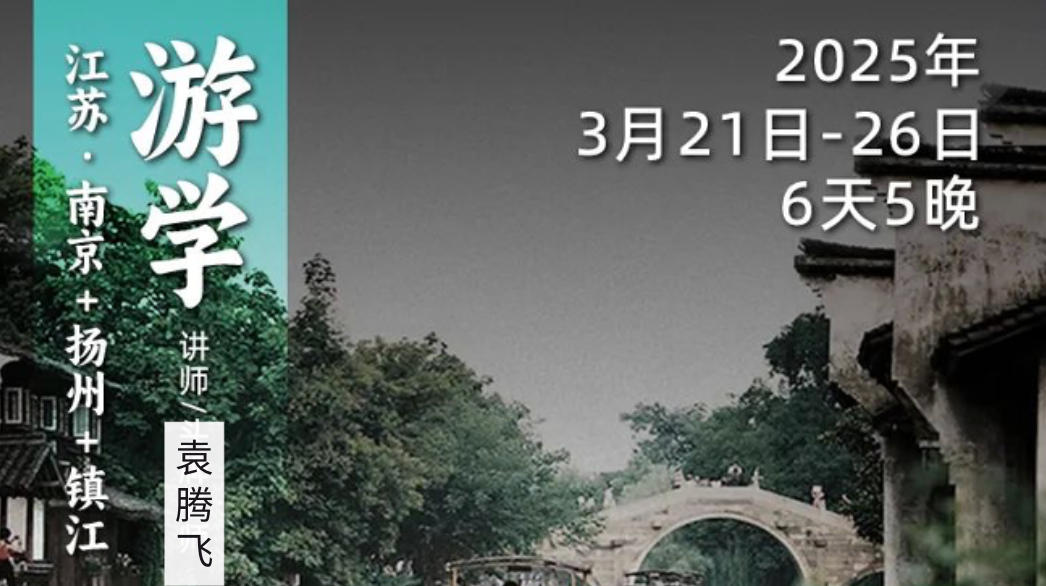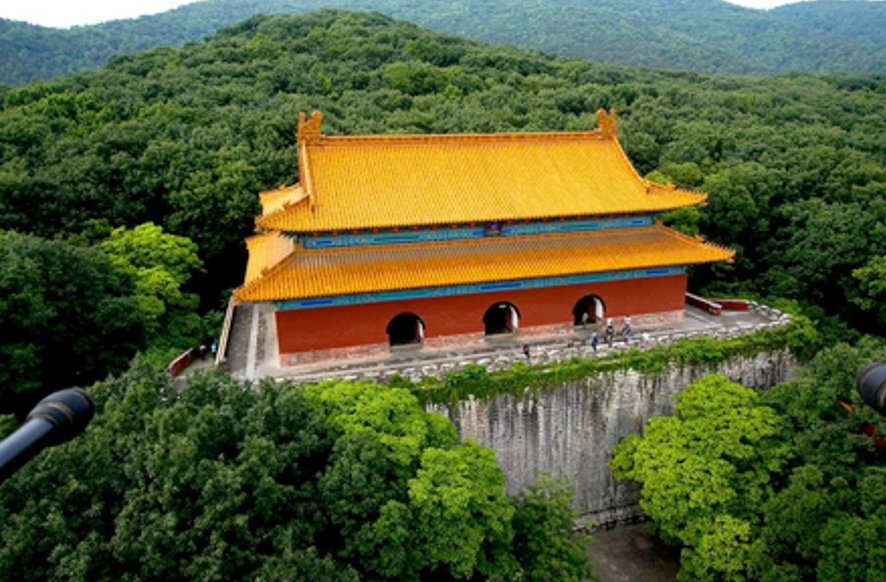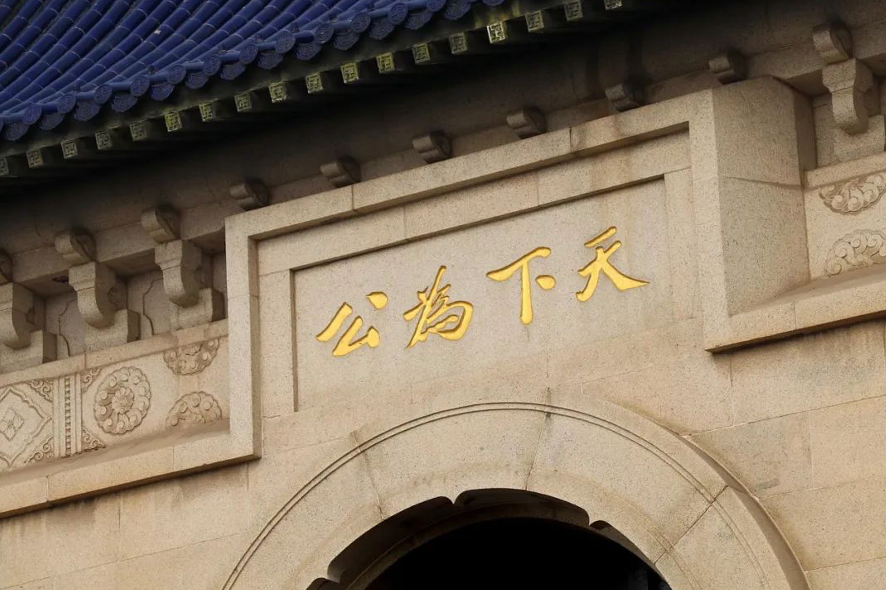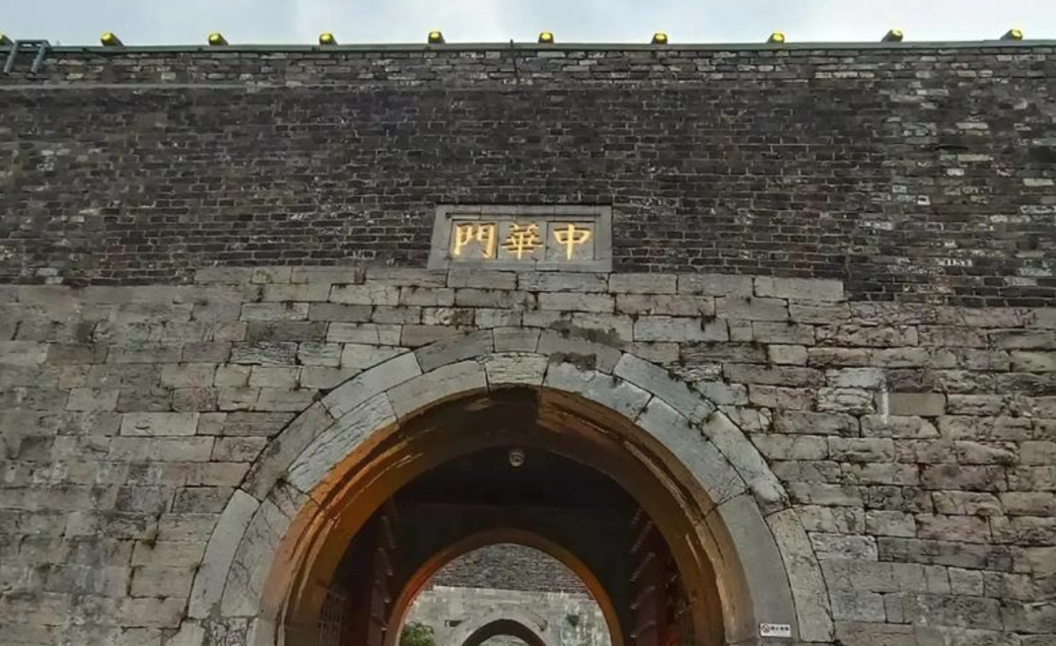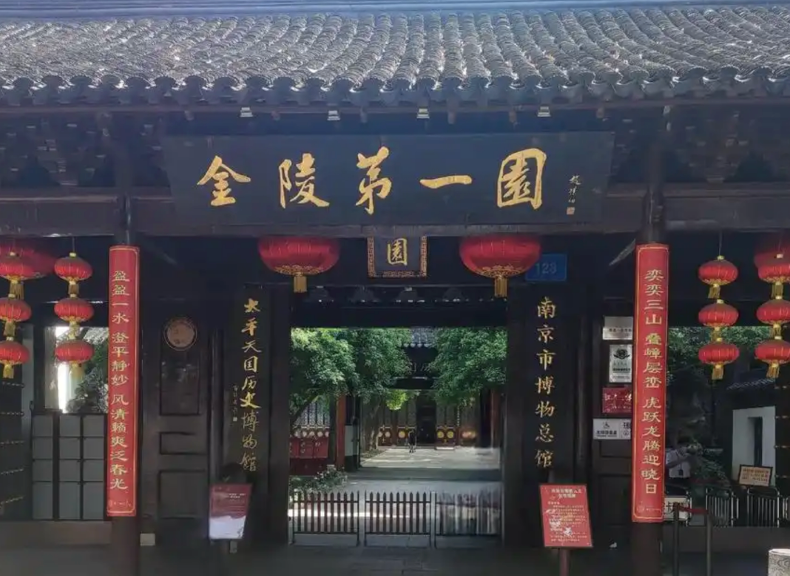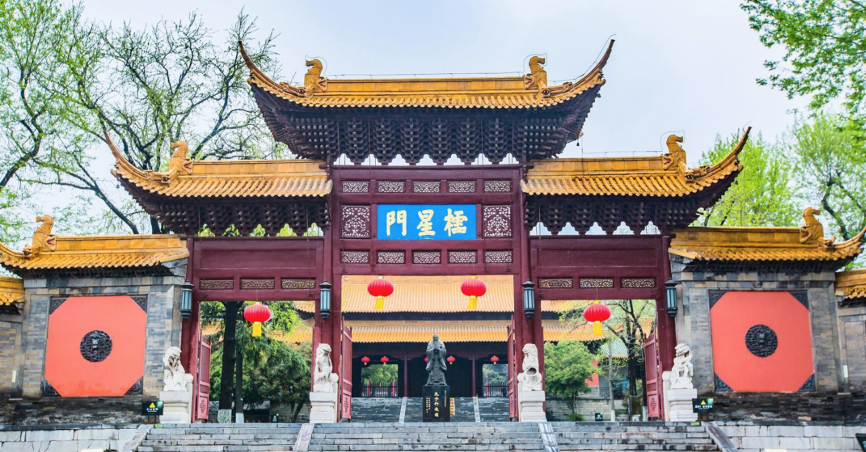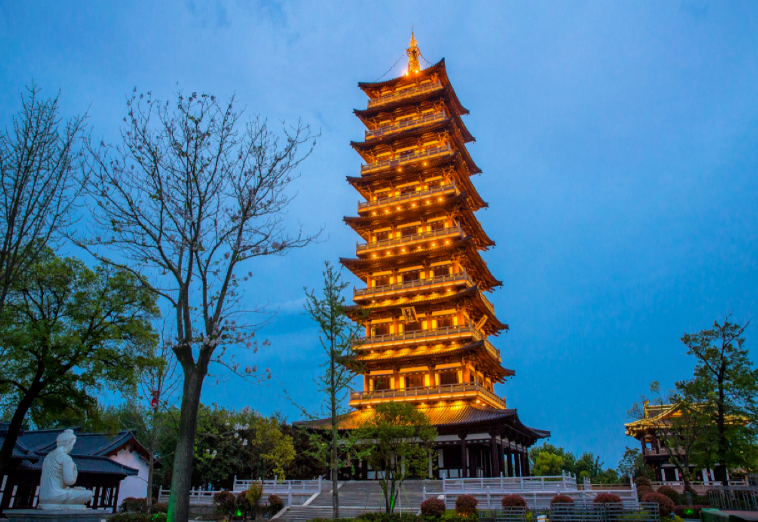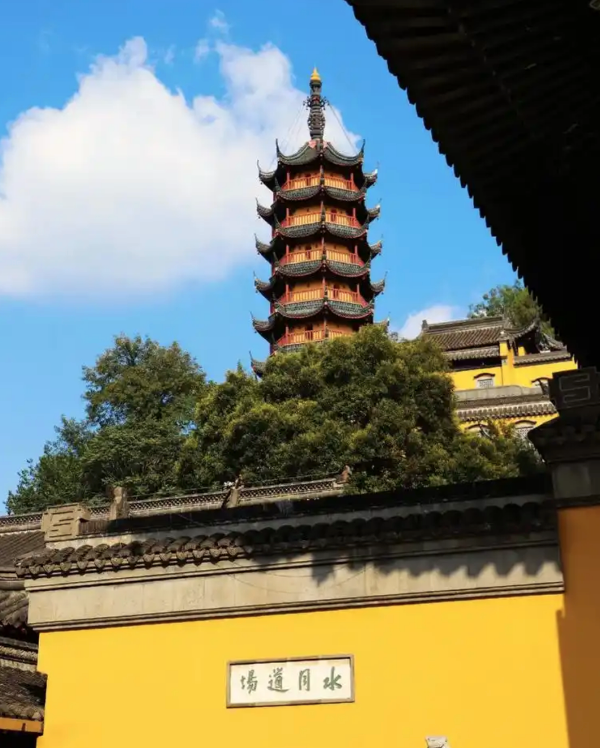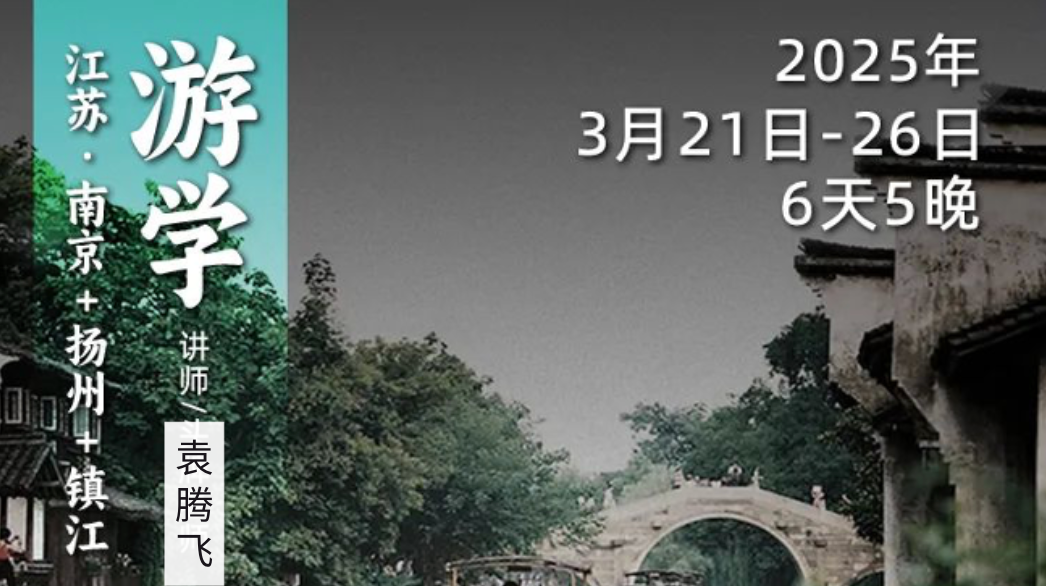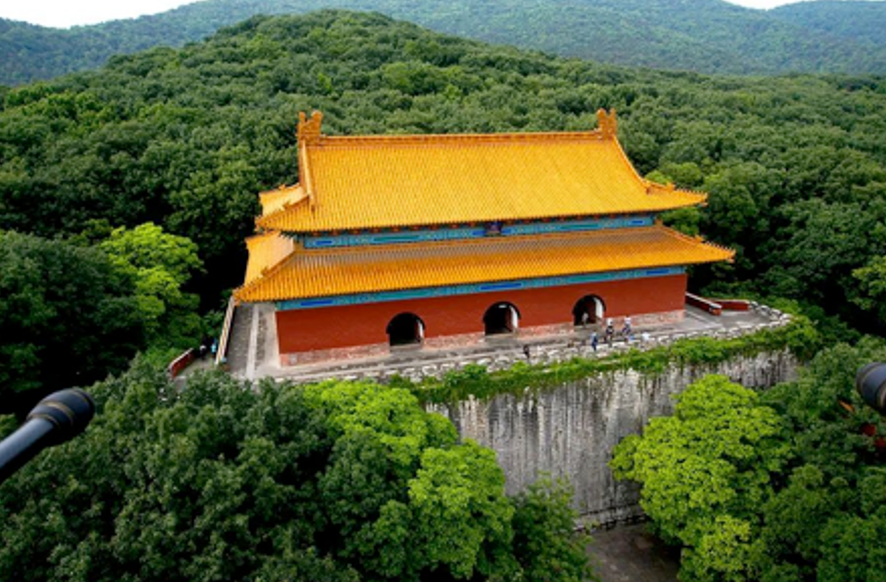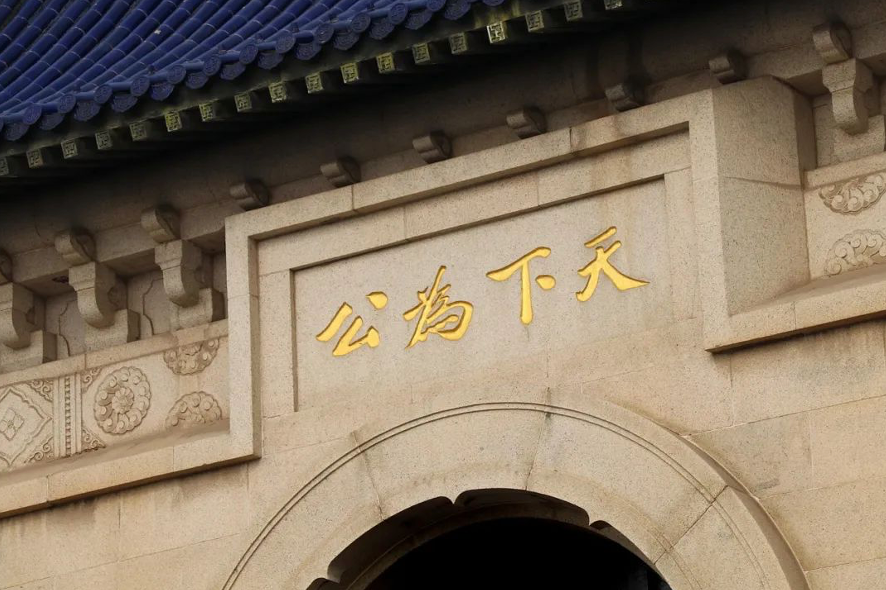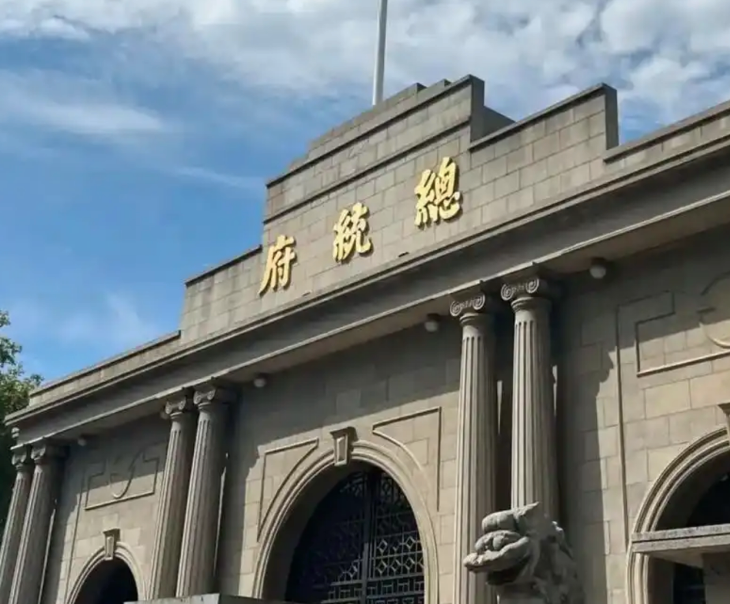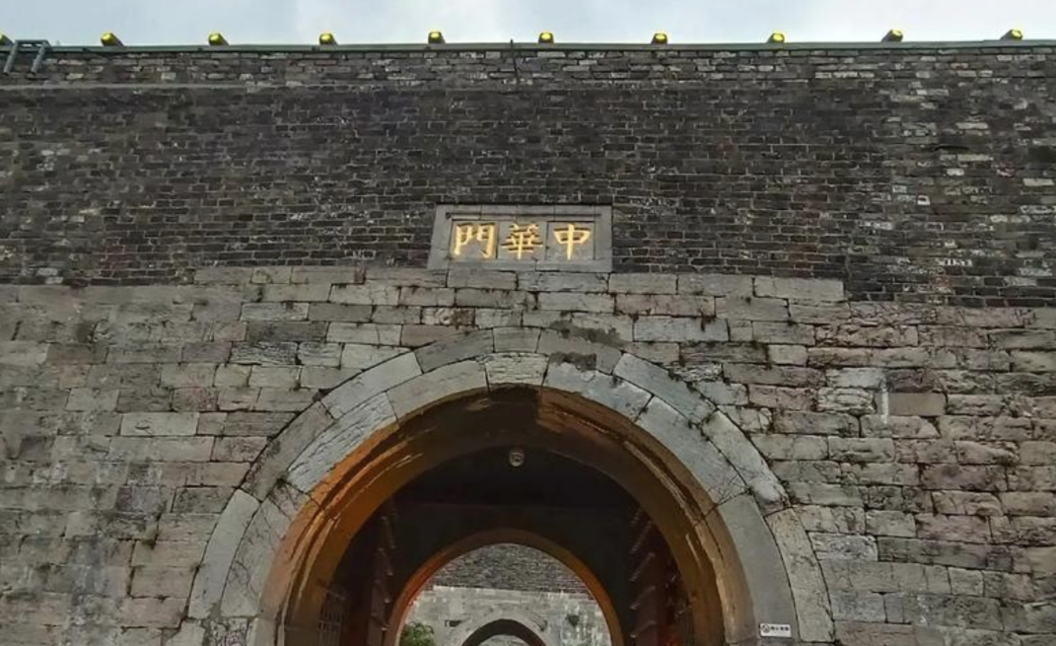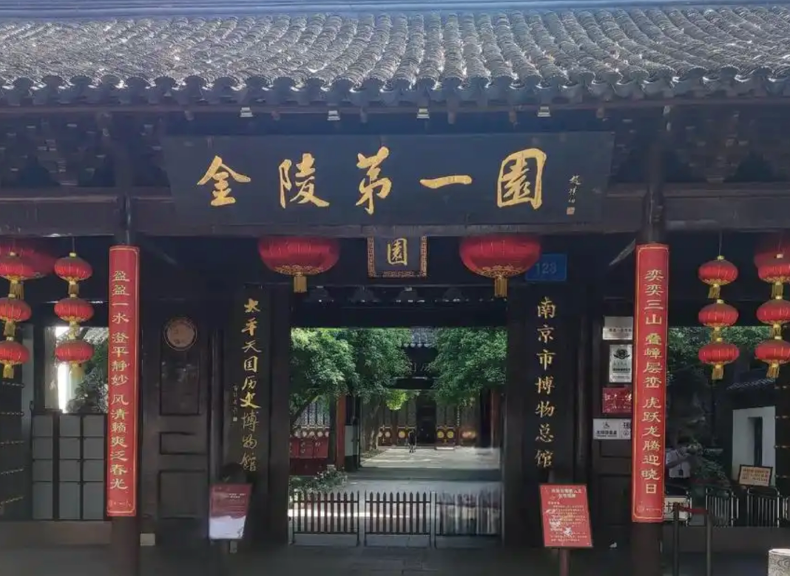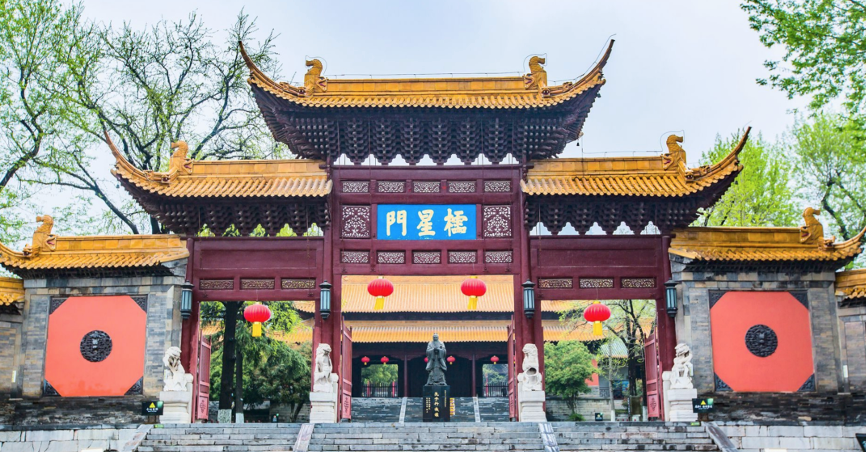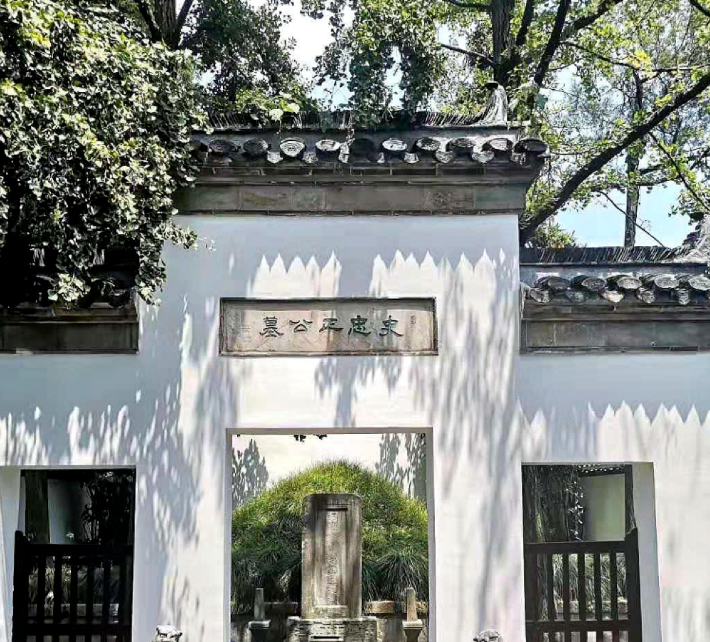LIFEANO 给生活另一种可能
March 21st-26th|Teacher Yuan Tengfei takes you to the south of the Yangtze River, through the mist of history, and feel the changes of the times!
March 21st-26th|Teacher Yuan Tengfei takes you to the south of the Yangtze River, through the mist of history, and feel the changes of the times!
Out of stock
Couldn't load pickup availability
Jiangnan
It is a place that carries thousands of years of cultural imagery.
There are many beautiful scenery here, which attracted many literati.
Left many famous quotes
Whether it is the important city of Nanjing in history
Yangzhou is still the most beautiful place with beautiful scenery and beautiful people.
Or the beautiful scenery and ancient monuments of Zhenjiang
Have many stories
This spring
Traveling to Jiangnan with Teacher Yuan Tengfei
Let the " best history teacher in history " tell you these stories
Team leader
Teacher Yuan Tengfei
Called " the best history teacher in history " by fans
1. Ming Xiaoling Mausoleum

Ming Xiaoling Mausoleum is the burial place of Emperor Taizu Zhu Yuanzhang and his empress. Because the empress Ma was posthumously named " Empress Xiaocigao " and because she practiced filial piety to rule the world, it was named " Xiaoling Mausoleum " .
The Ming Xiaoling Mausoleum is one of the largest imperial mausoleums in China. It inherited the old system of " building mausoleums on mountains " of the Tang and Song dynasties, and created a new system of square tombs as circular mounds. It harmoniously integrates humanity and nature, achieving the perfect height of harmony between man and nature, and has become an excellent example of the combination of traditional Chinese architectural art culture and environmental aesthetics.
As the first of the imperial tombs of Ming and Qing dynasties in China, Ming Xiaoling Mausoleum represents the highest achievement of architecture and stone carving art in the early Ming Dynasty. It directly influenced the shapes of more than 20 imperial tombs over a period of more than 500 years during the Ming and Qing dynasties. The royal tombs of Ming and Qing dynasties distributed in Beijing, Hubei, Liaoning, Hebei and other places in the course of history were all built according to the regulations and model of Ming Xiaoling Mausoleum in Nanjing. It has a special position in the history of the development of imperial tombs in China, and thus has the reputation of " the first royal tomb of Ming and Qing dynasties " .
2. Sun Yat-sen Mausoleum

The Sun Yat-sen Mausoleum, built in the 15th year of the Republic of China ( 1926 ), is the mausoleum of Sun Yat-sen, the pioneer of China's democratic revolution, and its affiliated memorial buildings.
The Sun Yat-sen Mausoleum covers a total area of 130 square kilometers. It consists of six parts: the Sun Yat-sen Mausoleum Park, the tombs of Liao Zhongkai and He Xiangning, the tombs of Deng Yanda and Tan Yankai, the National Revolutionary Army Cemetery for Martyred Soldiers, and the former site of the Sun Yat-sen Mausoleum's affiliated Revolutionary History Library. The Sun Yat-sen Mausoleum is the first group of ritual buildings in China built under the influence of Western modern architectural ideas. It is an important public building with contemporary characteristics, cultural classics, rich connotations, and world significance.
3. Presidential Palace

The Presidential Palace in Nanjing is the largest and most complete architectural complex in modern China. It is also one of the main representatives of the architecture of the Republic of China in Nanjing and an important site in modern Chinese history. Since modern times, the Presidential Palace in Nanjing has repeatedly become the center of China's political and military affairs and the source of major events. A series of major events in China may have occurred here or are closely related to this place, and many important figures have been active here.
The Presidential Palace in Nanjing has a history of more than 600 years, which can be traced back to the Guidehou Mansion and Hanwang Mansion in the early Ming Dynasty. In the Qing Dynasty, it was opened as the Jiangning Weaving Bureau, the Liangjiang Governor-General's Office, etc. Kangxi and Qianlong used it as a palace during their southern tours. After the Taiping Heavenly Kingdom established its capital in Tianjing, a large-scale Heavenly King's Palace was built here. On January 1, 1912 , Sun Yat-sen was sworn in as the provisional president of the Republic of China here, and it was opened as the Presidential Palace, and later as the Presidential Palace of the Nanjing National Government.
The Nanjing Presidential Palace complex has both traditional Chinese Jiangnan gardens and modern westernized architectural remains. It is divided into three areas: the central area mainly includes the National Government, the Presidential Palace and its affiliated institutions; the western area includes Sun Yat-sen's office, the secretariat, the West Garden, Sun Yat-sen's living room and the General Staff Headquarters; the eastern area mainly includes the Executive Yuan, Taolin Temple, the stables and the East Garden. There are more than a dozen cultural relics and historical materials and restored displays distributed among them, including the Presidential Palace cultural relics and historical materials, Sun Yat-sen and the Nanjing Provisional Government, the Taiping Heavenly Kingdom, and the Qing Liangjiang Governor's Office.
4. Zhonghua Gate

Zhonghua Gate, formerly known as Jubao Gate, is one of the 13 gates of Nanjing's Ming City Wall. It is the largest existing gate in China and the most complete and complex fortress-style urn city in China, known as the " No. 1 urn city in the world " . Zhonghua Gate is located in the south of Nanjing City in the Ming Dynasty. It was expanded during the Hongwu period of the Ming Dynasty on the basis of the old sites of the south gates of Jiangning Prefecture and Jiankang Prefecture. It took a total of 21 years to build. The foundation of the gate is giant stone slabs, and the wall is built with large bricks and reinforced with an adhesive made of glutinous rice juice, lime and tung oil.
In the third year of Emperor Xianfeng's reign in the Qing Dynasty ( 1853 ), the Taiping Army bombarded the Jubao Gate. This was the first time that the Zhonghua Gate city wall, which was indestructible in the era of cold weapons such as spears and swords, encountered an artillery attack.
In the 20th year of the Republic of China ( 1931 ), the Nanjing National Government changed Jubao Gate to Zhonghua Gate, with the meaning of revitalizing China, and newly opened Zhonghua East Gate and Zhonghua West Gate on the east and west sides of the gate respectively. In 1937 , the Japanese invaders launched a full-scale war of aggression against China. At the end of November , the Japanese invaders approached Nanjing, and the battle for the city wall became an important part. The Nanjing city wall suffered a great disaster in the war. The Zhonghua Gate Tower collapsed in the fierce bombardment of the Japanese army, and a corner of the city platform was also blown down. The Chinese defenders used the caves in the city walls to fight hand-to-hand with the Japanese army. This was the most tragic battle in Zhonghua Gate.
5. Zhanyuan Garden (Taiping Heavenly Kingdom History Museum)

Zhanyuan was first built in the early Ming Dynasty. It was the palace of Prince Wu before Zhu Yuanzhang, the first emperor of the Ming Dynasty, became emperor. Zhu Yuanzhang granted the palace to Xu Da but Xu Da refused to accept it. Later, Zhu Yuanzhang ordered the construction of a new palace based on the Guandi Temple opposite the palace and built extensive gardens. It was the palace garden of Xu Da, the King of Zhongshan.
In the second year of Shunzhi reign of the Qing Dynasty ( 1645 ), the garden became the office of the Left Provincial Governor of Jiangnan Province. When Emperor Qianlong visited Jiangnan, he stayed in the garden and inscribed the plaque " Zhanyuan " . After the Taiping Heavenly Kingdom established its capital in Nanjing in the third year of Xianfeng reign of the Qing Dynasty ( 1853 ), Zhanyuan successively served as the residence of Yang Xiuqing, the Eastern King, Lai Hanying, the Deputy Prime Minister of Xiaguan, and Xiao Youhe, the Young Western King. In the third year of Tongzhi reign of the Qing Dynasty ( 1864 ), the Qing army captured Tianjing and the garden was destroyed in the war. In the fourth year of Tongzhi reign ( 1865 ) and the twenty-ninth year of Guangxu reign ( 1903 ), Zhanyuan was rebuilt twice, but it was no longer in its original state. In addition, the Taiping Heavenly Kingdom History Museum was established in Zhanyuan, which is the only Taiping Heavenly Kingdom history museum in China.
6. Chaotian Palace (Nanjing Museum)

Chaotian Palace, built in the 17th year of Hongwu in the Ming Dynasty ( 1384 ), is the highest-level, largest and most complete ancient official-style building complex of the Ming and Qing Dynasties in the Jiangnan region. It is now the Nanjing Museum. Chaotian Palace faces south and covers an area of about 70,000 square meters. It is a typical palace-style building of the Ming and Qing Dynasties. Its architectural pattern, style and construction technology are important physical materials for studying ancient Chinese architecture, especially Ming and Qing architecture, and have high historical, artistic and scientific value.
Nanjing Museum is a comprehensive history and art museum. As of 2023 , it has a collection of 84,551 pieces (sets) of cultural relics, including 46,386 pieces (sets) of precious cultural relics.
7. Daming Temple

Daming Temple was named after it was first built during the Daming period ( 457-464 ) of Emperor Xiaowu of the Southern Song Dynasty. Over the past 1,500 years, the name of the temple has changed a lot, such as " Qiling Temple " and " Xi Temple " in the Sui Dynasty, and " Chengping " in the late Tang Dynasty. In the Qing Dynasty, because of the taboo of " Daming " , it was once called " Qiling Temple " . In the 30th year of Emperor Qianlong's reign, the emperor personally wrote " Chiti Fajing Temple " . In 1980 , Daming Temple restored its original name.
In the first year of Renshou in the Sui Dynasty ( 601 ), Emperor Yang Jian issued an edict to build 30 pagodas across the country to celebrate his birthday to offer Buddha bones. The temple built the " Qiling Pagoda " , which is nine stories high and magnificent. It is praised as " the most unique in China " , so the temple is also called " Qiling Temple " . Master Jianzhen of the Tang Dynasty served as the abbot of Daming Temple, making Daming Temple an important ancient temple in the history of Sino-Japanese Buddhist cultural relics. In the third year of Huichang in the Tang Dynasty ( 843 ), the nine-story Qiling Pagoda was burned down by fire. Later, it was rebuilt by monks, but it was repeatedly destroyed. During the Qingli period of the Northern Song Dynasty, Ouyang Xiu built Pingshan Hall when he was the governor of Yangzhou. During the Wanli period of the Ming Dynasty, Wu Xiu, the governor of Yangzhou, rebuilt Daming Temple. In the twelfth year of Chongzhen, Yang Renyuan, the imperial censor, rebuilt it again.
During the prosperous reigns of Emperors Kangxi and Qianlong in the Qing Dynasty, Daming Temple was expanded to become the first of the eight famous temples in Yangzhou. In the 30th year of Emperor Qianlong's reign ( 1765 ), Emperor Qianlong toured Yangzhou and changed the name to " Fajing Temple " . However, in the 3rd year of Emperor Xianfeng's reign ( 1853 ), the Taiping Army occupied Yangzhou and Fajing Temple was destroyed in the war. In the 9th year of Emperor Tongzhi's reign ( 1870 ), Fajing Temple was rebuilt.
8. Shi Kefa Temple

Shi Kefa was a famous politician and anti-Qing hero in the late Ming and early Qing dynasties. His courtesy name was Xianzhi and his pseudonym was Daolin. He was from Xiangfu County, Henan Province. When the Qing army marched south, Shi Kefa was trapped in Yangzhou. When the city was broken, he was killed and the Qing army massacred the city for ten days. In the second year ( note: in 1646 ) , Shi Dewei, Shi Gong's adopted son, buried Shi Gong's official uniform and the tablet he held in court at Meihualing, which is now the " Cenotaph " . In the early Qing Dynasty, a temple was built outside the Great East Gate, but it was later destroyed.
In the 37th year of Emperor Qianlong's reign (1772 ) , a temple was built on the west side of the tomb to worship him. The temple and the tomb are connected and are commonly known as the Shigong Temple. (One theory is that it was built in the 33rd year of Emperor Qianlong's reign (1768) to praise Shigong.)
9. Golden Mount Temple

Jinshan Temple, also known as Jiangtian Temple and Jiangtian Zen Temple, is one of the four famous temples in China along with Putuo Temple, Wenshu Temple and Daming Temple. It was first built during the Eastern Jin Dynasty. In the fourth year of Tianjian ( 505 AD) during the Wei, Jin and Southern Dynasties, Emperor Wu of Liang founded the Chinese Buddhist Water and Land Dharma Assembly in the temple. During the Dazhong period of the Tang Dynasty, Emperor Xuanzong of the Tang Dynasty ordered the temple to be renamed " Jinshan Temple " .
In the 25th year of Emperor Kangxi's reign ( 1686 ), Emperor Kangxi visited Jinshan and changed the name of the temple to " Jiangtian Temple " and inscribed the plaque " Jiangtian Zen Temple " . After generations of repairs, there are many historical sites in Jinshan Temple, the main buildings are the Heavenly King Hall, the Great Hall, the Guanyin Pavilion, etc. Jinshan Temple is a famous Zen meditation place of the Linji Sect, one of the heritages in the treasure house of human architectural culture, and also a famous historical and cultural temple. Stories such as " water flooding Jinshan Temple " are widely circulated.
Registration Information
Assembly / disbandment
● On March 21, 2025 (Friday), we will gather in Nanjing; on March 26 (Wednesday), we will disband in Zhenjiang. Please make proper arrangements for your schedule before and after the gathering;
Precautions
● Customer service will contact you one week in advance after registration, please keep your WeChat and phone open;
● Children under 6 years old are not recommended to participate. Minors aged 6-12 and seniors over 70 years old must be accompanied by a guardian;
Activity Fees
● The fee includes: meals, accommodation, transportation and lecturer explanations from the time of gathering to the time of disbanding; it does not include: round trips before the gathering and after the disbanding, and other expenses not listed;
Hassle-free refund policy
● If the event is cancelled due to reasons of the organizer, all fees will be refunded;
● If the event is cancelled due to force majeure, the unincurred fees will be refunded;
● If you are unable to attend the event due to personal reasons, no fees will be refunded (the spot is transferable). Please do not take pictures if you mind. Thank you for your understanding.
Share
